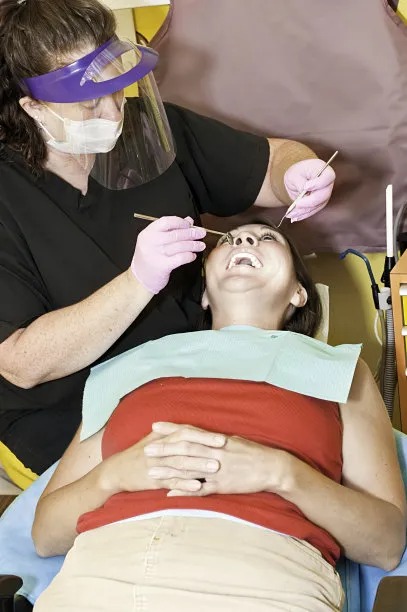The Essential Guide to Extracting a Tooth Safely and Minimizing Discomfort for a Quick Recovery
Summary: Extracting a tooth can be a daunting process, but with the right guidelines, it can be done safely and with minimal discomfort. This guide provides a comprehensive overview of the essential steps needed for a successful tooth extraction, focusing on preparation, the extraction procedure itself, post-extraction care, and tips for a quick recovery. By following these steps carefully, patients can ensure that their dental procedure is as smooth as possible, reducing anxiety and enhancing healing. Understanding these important aspects is key to navigating tooth extraction with confidence and ease.
1. Proper Preparation for Tooth Extraction

Before undergoing a tooth extraction, proper preparation is vital for a safe and comfortable experience. One of the first steps is to consult with your dentist thoroughly. This consultation should include a review of your medical history, any medications you are currently taking, and any allergies you may have. Addressing these factors helps your dentist identify potential risks and customize the sedation and anesthesia procedures for your unique needs.
Additionally, it is important to discuss what to expect during and after the extraction. Knowledge about the procedure helps to alleviate anxiety, allowing you to mentally prepare for surgery. Your dentist may also provide specific instructions, such as fasting before the extraction if sedation is required. Following these pre-procedure instructions diligently ensures a smoother experience.
Another vital aspect of preparation is organizing post-extraction support. Make arrangements for someone to accompany you to the appointment, particularly if you will be under sedation. This person can help you navigate any immediate needs you may have following the procedure, such as picking you up and assisting with medication instructions.
2. Understanding the Extraction Procedure
The extraction procedure itself typically varies based on whether the tooth is impacted or not. For non-impacted teeth, the dentist will use local anesthesia to numb the area before using specialized tools to loosen and remove the tooth. It is essential to communicate with your dentist throughout the procedure, especially if you experience any discomfort at any stage.
In cases of impacted teeth, additional techniques may be necessary, such as an incision to expose the tooth or removal of some bone. Understanding this aspect ahead of time can provide peace of mind and reassure you that your dentist will prioritize your comfort and safety throughout the extraction.
Once the extraction is complete, your dentist will provide you with instructions on how to care for the extraction site. Following these guidelines is crucial to prevent complications like excessive bleeding or infections, setting the stage for a successful recovery.
3. Post-Extraction Care Recommendations
After a tooth extraction, proper post-extraction care is extremely important to minimize discomfort and promote healing. The first recommendation often involves biting down gently on a gauze pad for about 30-60 minutes to control any bleeding. After this period, you can remove the gauze pad and take stock of your bleeding status.
Maintaining a soft diet for the initial few days post-extraction can significantly aid in your recovery. Foods such as yogurt, smoothies, and mashed potatoes are not only easy to consume but also gentle on the extraction site. Avoiding hard, crunchy, or spicy foods is essential to prevent irritation and complications during the healing process.
Additionally, oral hygiene should be modified during recovery. While it’s important to keep your mouth clean, be gentle when brushing near the extraction site. Your dentist may provide you with an antibacterial rinse to help maintain oral hygiene without disturbing the area. Following these care instructions will help reduce the risk of infection and ensure a smoother recovery.
4. Tips for a Quick and Comfortable Recovery
To ensure a quick recovery after your tooth extraction, there are several tips you can follow. Staying hydrated is crucial; however, avoid using straws for the first few days as the suction can dislodge the blood clot that forms in the socket, potentially leading to a painful condition known as dry socket.
Rest is equally important during the recovery phase. Taking it easy for the first couple of days allows your body to heal effectively. Activities such as strenuous exercise or heavy lifting should be avoided to prevent complications and prolonged recovery time.
If you experience pain or discomfort, your dentist may prescribe medication or recommend over-the-counter pain relievers. Always follow the dosage guidelines and consult your dentist if you have any concerns about your recovery process. Listening to your body and addressing any unusual symptoms promptly will support a quicker and more comfortable recovery.
Summary:
In conclusion, understanding the essential steps for extracting a tooth safely and minimizing discomfort is vital for a smooth experience. Preparing adequately, knowing what to expect during the procedure, practicing proper post-extraction care, and following recovery tips can significantly impact your overall experience and healing process.
This article is compiled by Vickong Dental and the content is for reference only.



